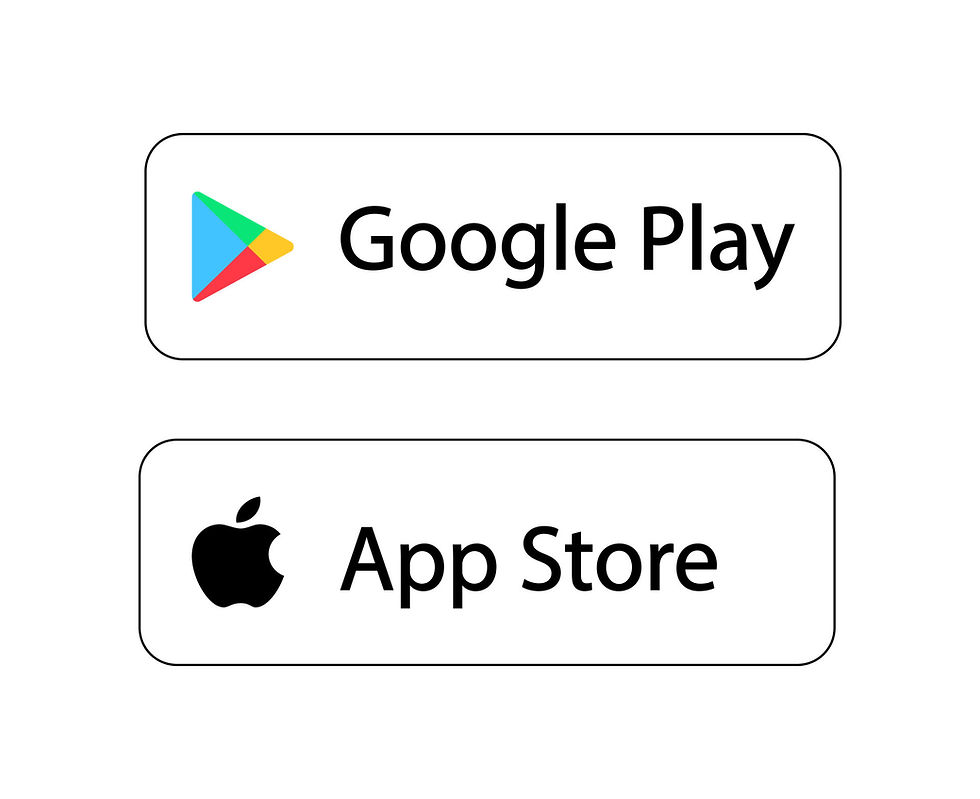The Business Dynamics Behind Google Play Store and Apple Store
- Marcelo Serafim
- Nov 8, 2023
- 4 min read
Updated: Dec 28, 2023
Mobile applications have revolutionized the way we interact with technology. The Google Play Store and Apple Store serve as hubs for accessing apps, games, and various digital content. These platforms offer developers a space to showcase their creations to a vast user base. Understanding the workings of these stores sheds light on the business strategies employed by Google and Apple.

The Platform Structure: Google Play Store and Apple Store are digital distribution platforms where users can download and purchase applications. While Google Play Store caters primarily to Android users, the Apple Store is exclusively for iOS users. Each platform has its guidelines, policies, and submission processes for developers to list their apps.

Revenue Models: Both stores generate revenue primarily through commissions from app sales and in-app purchases. For instance, they charge a percentage fee on each app purchase made through their platforms. These fees provide the primary income stream for Google and Apple from these stores.
Apple App Store: Apple charges a 30% commission on sales of paid apps and in-app purchases. This means developers receive 70% of the sales, and Apple retains 30%. For subscriptions, Apple takes 30% of the first year's subscription and then 15% for subsequent years.
Google Play Store: Google also charges a 30% commission on sales of paid apps and in-app purchases. However, as of July 2021, Google announced a reduction in its commission to 15% for the first $1 million of revenue developers earn each year from the Play Store.

Competitive Landscape: The competition between the two stores is fierce. While Google Play Store has a more open approach to app submission, the Apple Store is more stringent, employing a curated approach for app acceptance. Developers must adhere to Apple’s strict guidelines for their apps to be listed.
User Engagement and Monetization: User engagement is critical for app success.
The stores employ algorithms to feature apps based on various factors such as user ratings, reviews, and engagement metrics. Monetization strategies for apps also vary, where in-app purchases, subscriptions, and advertisements contribute to revenue.
Security and Trust: Both stores prioritize security and user trust. They implement stringent security measures to protect users from malicious apps and require app developers to adhere to specific standards to ensure data privacy and security.
Five Questions:
How do Google Play Store and Apple Store differ in their approaches to app submissions?
What revenue models do these stores use to generate income?
How do app rankings and user engagement impact app visibility in these stores?
What are the key differences between Google Play Store and Apple Store in terms of app policies?
How do these stores ensure user security and trust in app downloads?
Vocabulary:
Caters: To provide what is needed or desired.
Curated: Carefully selected and organized.
Adhere: To stick to or follow something.
Engagement: Involvement or active participation.
Monetization: The process of earning revenue from something.
Stringent: Strict or precise.
Malicious: Intended to harm or damage.
Adherence: Acting in accordance with specified rules or standards.
Visibility: The state of being able to see or be seen.
Algorithms: Procedures or formulas for solving problems.
Phrasal Verb:Stand out: To be noticeably better or more significant than others. Example: "The app's unique features help it stand out in the crowded market."
American Idiom:The ball is in your court: It's your responsibility to make a decision or take action. Example: "I've provided all the necessary information; now the ball is in your court."
English Grammar Tip: When writing about two entities or subjects (like the Google Play Store and Apple Store), maintain consistency in your comparison. For instance, if you're discussing a feature in one, ensure you relate it to a similar feature in the other for clear comparison.
In English grammar, the comparative and superlative forms are used to compare adjectives and adverbs.
Comparative Form: This form is used to compare two things or people. To form the comparative, the suffix "-er" is added to short adjectives (like "tall" becomes "taller") or "more" is used before the adjective or adverb for longer words (like "beautiful" becomes "more beautiful"). For some adjectives, irregular forms are used (such as "good" becoming "better" and "bad" becoming "worse"). Example:
Mary is taller than Max.
The movie was more interesting than the book.
Superlative Form: The superlative form is used when comparing three or more items, indicating the highest or lowest degree of an adjective or adverb. The suffix "-est" is added to short adjectives (like "big" becomes "biggest") or "most" is used before the adjective or adverb for longer words (like "delightful" becomes "most delightful"). Again, for some adjectives, irregular forms are used (such as "good" becoming "best" and "bad" becoming "worst"). Example:
Mount Everest is the tallest mountain in the world.
The Eiffel Tower is one of the most beautiful landmarks.
To summarize, the comparative form is used to compare two items, while the superlative form is used to compare three or more items, showing the highest or lowest degree of the adjective or adverb.
Listening
Homework Proposal:
Research and present a comparative analysis of the revenue models employed by the Google Play Store and Apple Store.
Create a presentation about the differences in the app submission and approval processes between the two platforms.
Develop an essay on the significance of user engagement and visibility for app success in digital stores.
Write a case study on an app's success story in either the Google Play Store or Apple Store, highlighting the strategies that contributed to its success.
Conduct a survey on user trust and security perceptions on app downloads from these platforms, and present the findings.



Comments